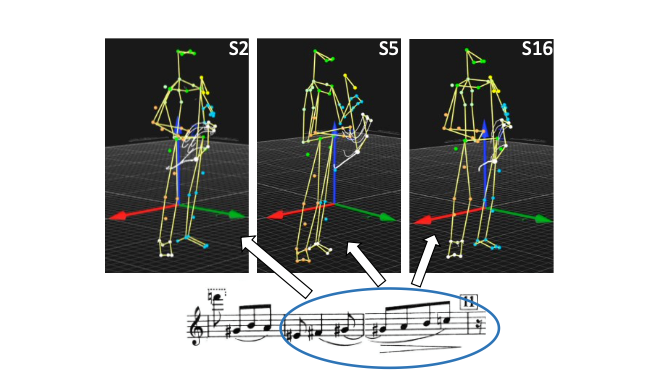Nádia Margarida Trindade Moura's doctoral dissertation in Science and Technology of the Arts will be held on October 4 at 11:30 a.m. in the Carvalho Guerra Auditorium at Universidade Católica Portugesa, in Porto.
The dissertation, entitled “The influence of gesture in saxophone musical performance and audience perception: a multimodal analysis”, was supervised by Professor Dr. Sofia Serra and Professor Dr. João Paulo Vilas- Boas.
The research explores the gestural processes inherent in saxophone performance with the aim of understanding how they can be used consciously to improve performance, through a multimodal and multiperspectival approach.

ABSTRACT
Body movement plays a key role in music performance. Performers’ gestures not only relate to instrumental manipulation and technical proficiency but also reflect expressive and communicative aspects, essential to achieving meaningful musical interpretations. Despite the growing body of research on instrumental motor behaviour, its scope remains limited, particularly for certain instruments. To effectively integrate these principles into instrumental education, more robust scientific foundations are required.
Framed within the embodied music cognition paradigm, this thesis explored the processes of gesture-making in saxophone performance with the aim of understanding how these can be consciously used to improve performance. Adopting a multimodal, multi-perspective approach, we conducted a series of studies including quantitative and qualitative data derived from both objective motion, video and audio recordings, and subjective perceptions of performers (interviews) and the audience (questionnaires). The empirical part of this thesis comprises three blocks: performative gesture analysis, performers’ perception, and audience perception. “Performative gesture analysis” presents four studies: the first two present video-based observational movement analyses performed to delimit and quantify recurrent gestures among saxophone players; the third and fourth studies present detailed kinematic analyses of knee flexion and dynamic postural sway, relating them with the performed music. “Performers’ perception” features one interview study conducted to explore performers’ perspectives, experiences, and habits. “Audience perception” introduces two audience perception studies: the first compared expressive movement to no movement and assessed the efficiency of four motion visual displays in communicating expressiveness; the second investigated how the quantity and quality of expressive motion influence participants’ evaluation of negatively and positively valenced music performances.
This investigation presents novel insights on the role of gesture in saxophone performance, relating them to existing literature on other instruments. It also expands the knowledge of the cognitive and motor processes involved in music experience.
KEYWORDS: Expressive Gesture, Body Movement, Professional Musicians, Motor Behaviour, Motion Capture, Multisensory Integration




